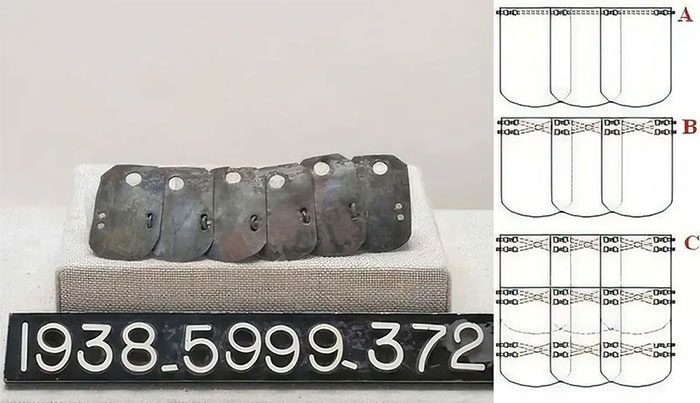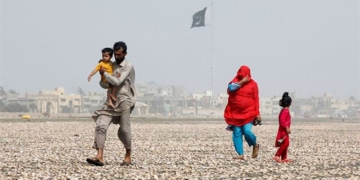Before the 20th century, armored cavalry, with both riders and horses covered in iron armor, was the most formidable force on the battlefield.
From the tumultuous Middle East to Asia, Europe, and even Africa, everywhere there were efforts to invest in armored cavalry to gain an advantage.
Heavy Cavalry
In the 4th century BC, the Sarmatians, a Turkic people who migrated from Central Asia to the Ural Mountains dividing Europe and Asia, unexpectedly achieved a significant victory against the overwhelming military forces of the Scythians, the dominant ethnic group in the Black Sea steppes. The key that allowed this small nation to repel the Scythians was their armored cavalry, a force unafraid of weaponry.
Although successful due to their armored cavalry, the Sarmatians were not the innovators; rather, it was the Medes and Persians, two ancient Iranian peoples. They lived on the vast steppes of Central Asia and soon acquired many horses. One of the horse breeds favored by these two peoples was the Nisaia horse, known for its large size and unparalleled strength, making it suitable for training as war horses.
Throughout many centuries BC, Central Asia was a contested land among nomadic peoples. The Medes and Persians were skilled both in mounted combat and hand-to-hand fighting. As losses of both men and horses occurred each time they went into battle, they devised armored cavalry to protect both.
Armored cavalry consisted of two types: armor for the rider and armor for the horse. These were crafted from metal, typically iron, and needed to meet two requirements: safety and flexibility. For safety, the armor had to be thick and complete enough to shield the entire body.
To ensure flexibility, the armor could not hinder movement. After many experiments, the Medes and Persians ultimately created the most suitable type of armor known as scale armor.
As the name suggests, scale armor is a combination of many iron pieces shaped like scales, joined together. Thanks to deliberately loose joints, it could bend flexibly without hindering movement. With scale armor, the armored cavalry emerged, quickly overpowering other military forces with its superior self-protection.
Despite being very strong, armored cavalry had a significant weakness: it was too heavy. On average, a set of armor for a horse weighed about 40 kg. The armor for the rider was lighter, but when combined with the total weight of the armor, weapons, and the rider, it could reach up to 100 kg. All this weight was placed on the horse’s back, naturally exhausting the horse and slowing its movement. For this reason, armored cavalry was classified as heavy cavalry.

A piece of scale armor from the 4th century BC found in the ruins of Greek-Roman civilization. (Photo: Thecollector).
Spreading and Inspiring
A set of scale armor for horses typically came in parts, including a full head and neck covering, a front body armor, a rear body armor, etc., to maximize the horse’s flexibility. The scale armor for riders was even more complex and, besides the scale design, included other designs such as chainmail, fibers, and plates.
The primary weapon of armored cavalry was the spear, while secondary weapons included swords, bows, and maces. Compared to light military forces, armored cavalry was both heavy and hot (due to heat retention), making it prone to exhaustion. Therefore, attacks by armored cavalry were always combined with firepower and light cavalry.
Typically, the battle of armored cavalry began with a rain of arrows, using fire to pin down the opponent first, before charging into close combat. With their armor providing excellent protection for both horse and rider, they quickly broke the enemy’s formation. When the opponent fled, the light cavalry would take the place of the armored cavalry and rush in for pursuit.
From its origin in Iran, armored cavalry spread in all directions and was increasingly adopted by various nations and empires. The Western world became aware of armored cavalry in the 5th century BC during the Ionian Revolt and the Greco-Persian Wars. Impressed by the power of the armored cavalry, the Greeks eagerly sought to imitate it, striving to create superior and even heavier armor.
Contrary to Central Asia, when it spread to Europe, armored cavalry was defeated by the formidable, disciplined, and tactically skilled Roman military forces. However, the victors had to set aside their pride to imitate it. From the 3rd century AD, armored cavalry became an essential unit in the Roman expeditionary forces.
As it spread throughout Asia, armored cavalry reached China during the Three Kingdoms period (220 – 280 AD). Prior to this, Chinese military forces typically used leather armor. For the following 1,000 years, Chinese dynasties actively developed armored cavalry, but due to a lack of horse resources and conditions for nurturing and training war horses, they were unsuccessful. After being conquered by the Mongols in the latter half of the 13th century, China abandoned armored cavalry.
While China faced setbacks, the Byzantine Empire (330 – 1453) in Eastern Europe successfully built the most powerful armored cavalry force. By improving the armor to be lighter, they enhanced the speed of heavy cavalry and continuously achieved overwhelming victories on the battlefield.
From Byzantine, the “new generation” of armored cavalry spread to neighboring countries, especially favored by the Bulgars, Slavs, Avars, Lithuanians, Alans, and Khazars. By the 15th century, even Western Europe was flooded with armored cavalry. However, over time, the Byzantine Empire became increasingly impoverished due to wars and unrest. They gradually lacked the treasury to invest in armor, lost their armored cavalry, and eventually fell into the hands of the Ottomans.
Compared to Europe and Asia, armored cavalry arrived in Africa very late. Nevertheless, it was still the main force that helped form and develop the Oyo Empire (17th – 19th century).
The advent of military mechanization rendered armored cavalry obsolete. However, its glorious history and excellent self-defense features continue to inspire modern innovations and the development of tanks. Today, we commonly refer to tanks as armored vehicles, a name derived from armored cavalry.


















































